Early Stage Termites in Hardwood Floors: Detecting Signs
Did you know that around 5 billion dollars are spent annually on termite damage in the U.S. alone? I’ve seen firsthand how early stage termites in hardwood floors can wreak havoc. These termite pests often go unnoticed until hidden termite infestation occurs, leading to costly repairs.
Recognizing the signs of infestation is crucial for homeowners. I’ll share tips on identifying early stage termites and how to protect your hardwood floors. Understanding their behavior helps in prevention and treatment. You don’t want to wait until it’s too late. Let’s dive into the signs of termite infestation and potential termite damage so you can safeguard your home from these destructive insects.
Key Takeaways
- Look for early signs of termite activity, such as small holes or frass, to catch infestations before they worsen.
- Understand the different types of termites, especially subterranean and drywood termites, as they can affect hardwood floors in unique ways.
- Be aware that termites can cause significant damage to hardwood floors, leading to costly repairs if left untreated.
- Implement prevention tips like keeping wood away from moisture and sealing cracks to reduce the risk of termite infestations.
- Explore treatment options promptly if you suspect termite activity; professional pest control may be necessary for severe cases.
- Regular inspections of your hardwood floors can help you stay ahead of potential termite problems and maintain your home’s integrity.
Identifying Early Signs
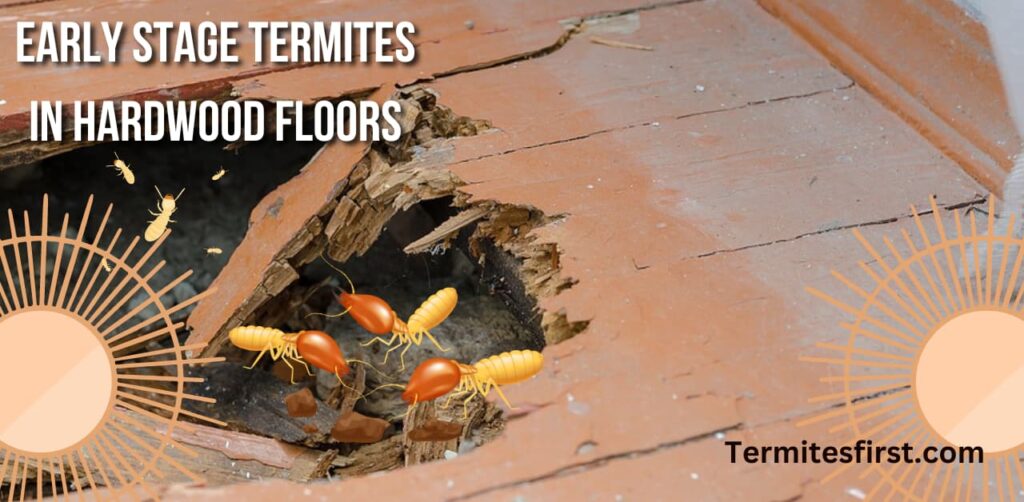
Swarming Termites
Winged termites often emerge during warmer months. Their presence indicates potential colony establishment nearby. I remember seeing these insects one summer day and realizing they were a sign of trouble.
Straight antennae and equal-length wings distinguish them from other insects. Indoor sightings can signal an ongoing infestation. If you notice them inside, act quickly to avoid further damage.
Mud Tubes Presence
Mud tubes are a clear sign of termite activity. These pencil-sized structures connect nests to hardwood floors. They serve as protective pathways for termites, keeping them safe from drying out.
Inspect walls, beams, and wood floor for signs of active mud tubes. Finding them means that termites are likely nearby. I once found mud tubes in my basement, which prompted me to call a pest control expert immediately.
Hollowed or Damaged Wood
Hollow sounds when tapping on hardwood floors suggest internal damage. This is a critical indicator of termite activity. I often check my floors by tapping lightly; it’s a simple yet effective method.
Examine visible surfaces for signs of tunneling or weakened sections. Damage may vary in extent, so assess the situation carefully. If you find significant damage, consider professional help to address the issue.
Blistering Floorboards
Raised or blistered areas on floorboards indicate moisture intrusion. Moisture can attract termites, making blistering a red flag. I have noticed this in older homes where water leaks were present.
Blistering may correlate with termite activity beneath the surface. Evaluate the overall condition of your flooring to identify underlying issues. Addressing moisture problems early can help prevent further infestations.
Types of Termites
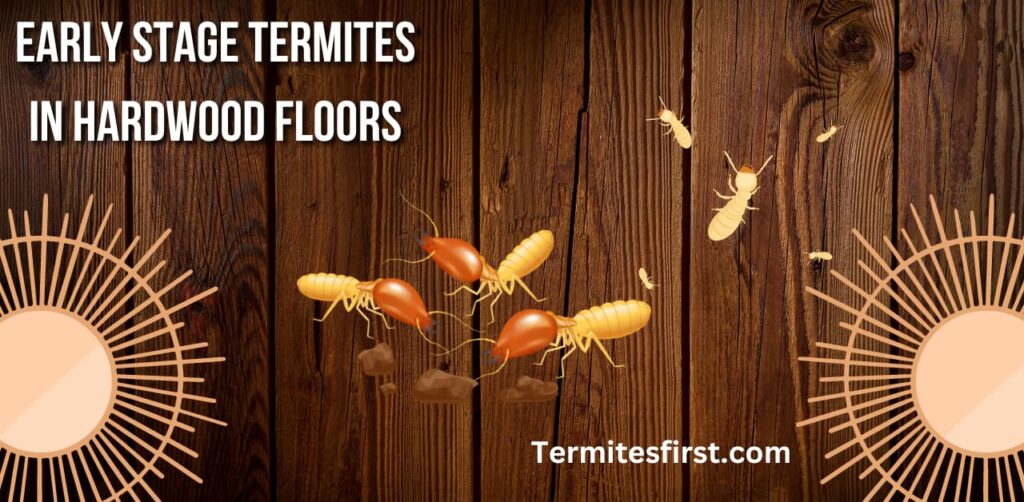
Subterranean Termites
Subterranean termites are the most common type in the United States. They thrive in moist environments, often near foundations. I have seen how these pests can quickly destroy wooden structures if left unchecked.
They prefer to access wood through soil contact. This behavior can lead to serious damage beneath the surface. Areas with high moisture levels become potential hotspots for infestations. Homeowners should regularly check basements and crawl spaces for signs of these termites.
Drywood Termites
Drywood termites present a different challenge. These insects can infest hardwood without needing contact with the ground. Their presence can often be identified through frass, which are droppings found near infested wood. I once discovered frass in my attic, which led to a thorough inspection of the area.
Treatment for drywood infestations is unique compared to subterranean types. It typically requires specialized methods like fumigation or localized treatments. Understanding their behavior is crucial for effective control.
Dampwood Termites
Dampwood termites thrive in areas with excessive moisture, such as those caused by leaky pipes. They prefer decaying or water-damaged wood, making them a concern for older homes. I noticed dampwood termites in my neighbor’s house due to a persistent leak that went unnoticed.
Inspecting wood structures in high-humidity environments is essential for early detection. These termites can cause significant damage if not addressed promptly.
How Termites Affect Floors
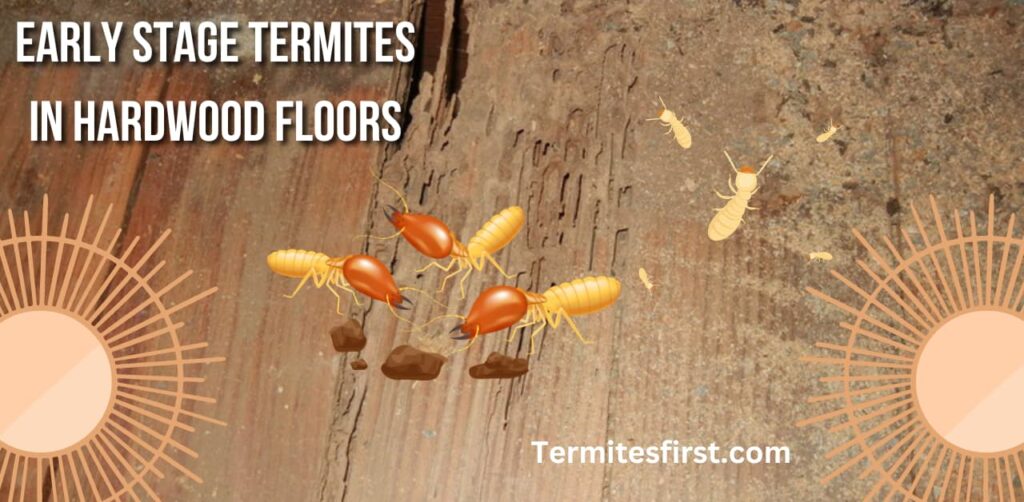
Flooring Integrity Issues
Termites can significantly impact hardwood floors. Regular evaluations of the structural integrity are essential. I often check for signs of weakness in my flooring. Sagging or uneven surfaces may indicate underlying termite damage. These issues can compromise safety and lead to costly repairs if ignored.
Prioritizing repairs is crucial. Addressing problems early helps maintain the safety of the home. It prevents further deterioration, which can become more complicated over time. Homeowners should inspect their floors at least once a year to catch any potential issues early.
Squeaky and Hollow Sounds
Unusual noises can signal termite activity. Squeaks or hollow sounds when walking on hardwood floors deserve attention. I have learned to listen closely for these indicators. They often point to damage within the wood caused by termites.
Using sound as a diagnostic tool is effective. If you hear these noises, it’s important to investigate further. Ignoring them could lead to more extensive damage down the line. A thorough check can help identify the problem before it escalates.
Loose Tiles and Joists
Loose tiles and joists can suggest underlying damage from termites. I always examine these areas during my routine checks. Movement in flooring is a clear sign of potential weaknesses. If you notice looseness, it may indicate that termites have compromised the structure.
Addressing loose components promptly is vital. This action can prevent further structural issues from developing. Repairing or replacing damaged areas early saves time and money later on. Homeowners should not overlook these signs as they could lead to serious consequences.
Prevention Tips
Regular Inspections
Schedule routine inspections of hardwood floors to catch early signs of termites. I recommend checking at least twice a year. Look for small holes, frass, or any wood damage. These are clear indicators of termite activity. Utilize professional services or DIY methods to ensure thorough assessments. Professionals can provide detailed reports and treatment options. However, I find that simple visual checks can also be effective if done regularly.
Document findings to track changes over time and inform treatment decisions. Keeping records helps identify patterns in termite activity. This data can guide future prevention strategies. Early detection is crucial in minimizing damage.
Moisture Control
Implement moisture control measures to reduce the risk of termite infestations. Termites thrive in damp environments. Address leaks and improve ventilation in areas prone to dampness. I often check under sinks and around appliances for hidden leaks. Monitoring humidity levels creates an unfavorable environment for termites. Use dehumidifiers in basements or crawl spaces to maintain optimal conditions.
Consider landscaping as well; ensure water drains away from your home’s foundation. Standing water attracts termites and other pests. By managing moisture effectively, you can significantly lower the chances of an infestation.
Sealing Cracks
Seal cracks and gaps in flooring and walls to prevent termite entry points. Small openings may seem harmless but can lead to serious problems. Use appropriate materials like caulk or foam sealant to ensure a tight seal against moisture and pests. I’ve found that regular maintenance of these seals is essential.
Regularly inspect seals for wear and tear to maintain effectiveness. Check around windows, doors, and baseboards as well. If you notice any deterioration, repair it immediately. This proactive approach can help keep termites at bay.
Treatment Options
Professional Extermination
Consulting pest control professionals is crucial for effective termite identification and treatment. They have the expertise to recognize different termite species. Each species requires specific treatment methods. For example, drywood termites may need heat treatments, while subterranean termites often require baiting systems.
I remember when I faced a termite issue in my home. The pest control expert used a targeted approach that effectively eliminated the problem. Following their recommendations for ongoing monitoring helped ensure the termites did not return. Regular check-ins can catch infestations early, saving time and money.
DIY Methods
Researching effective DIY methods can empower homeowners to manage early-stage termite infestations. Simple techniques include using cardboard traps to attract termites. Natural repellents like orange oil can also deter them. These initial measures can buy time before professional help arrives.
Staying informed about best practices enhances your home’s defenses against termites. I found that sealing cracks and crevices around my foundation made a significant difference. Regular inspections of wooden structures in your home can help catch issues early.
Repairing Damage
Assessing the extent of damage caused by termites is vital for planning appropriate repairs. Some areas may need complete replacement, while others might only require patching. Using quality materials ensures the integrity of hardwood floors is restored effectively.
Consider preventative measures during repairs to discourage future infestations. For instance, applying protective coatings can help safeguard wood surfaces. I learned that treating wood with borate solutions offers lasting protection against termites. This step has been invaluable in maintaining my hardwood floors.
Conclusion:-
Dealing with early stage termites in hardwood floors can feel overwhelming. I’ve shared key signs to look for, types of termites, and effective prevention and treatment strategies. By staying vigilant and informed, I can protect my home from these pesky invaders.
Ignoring the problem won’t make it go away. I encourage everyone to take action now. Regular inspections and timely treatments can save me a lot of hassle down the road. If I suspect termite activity, don’t hesitate to consult a professional. My home deserves the best protection possible. Stay proactive and keep those termites at bay!
FAQs:-
Look for small holes, frass (wood dust), and soft or hollow-sounding wood. Check for mud tubes along walls or foundations.
Common types include subterranean, drywood, and dampwood termites. Subterranean termites live underground, while drywood termites infest wood directly. Dampwood termites thrive in moist environments.
Termites consume cellulose found in wood, weakening its structure. This can lead to sagging floors and increased risk of collapse over time.
Regularly inspect your home for moisture issues, seal cracks, and remove wood debris. Consider using termite-resistant materials during construction or renovation.
Treatment options include liquid insecticides, bait systems, and fumigation. Consult a pest control professional to determine the best method for your situation.
While DIY methods exist, professional treatments are often more effective. Experts can identify the type of termite and apply targeted solutions safely.
Inspect your home at least once a year. More frequent checks may be necessary if you live in an area prone to termite activity.

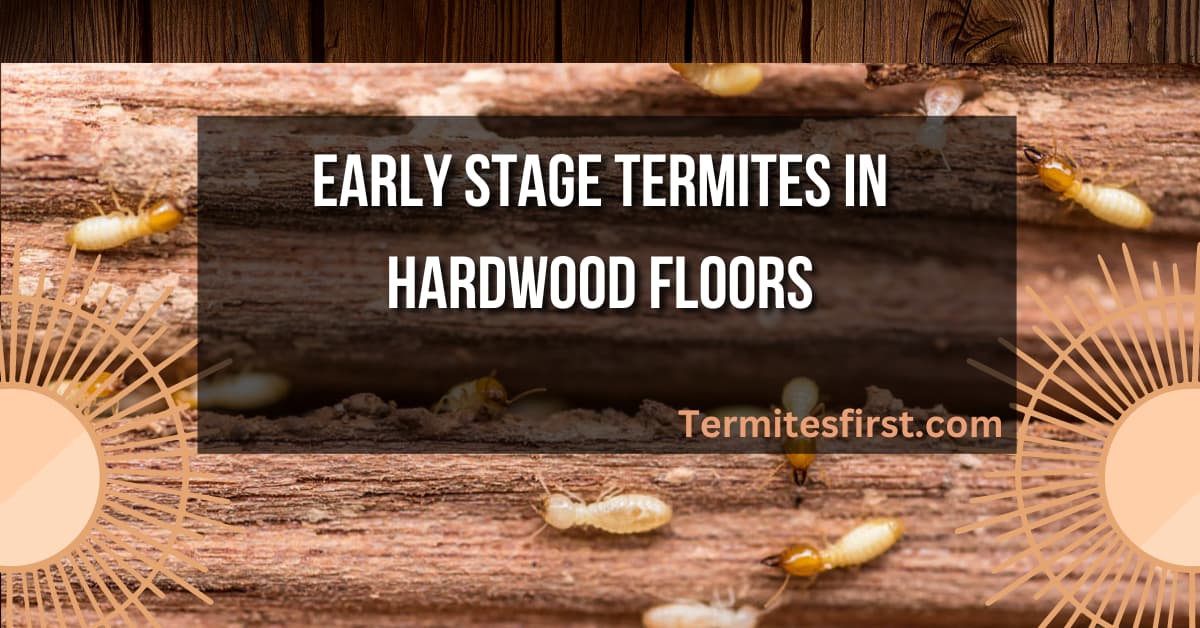
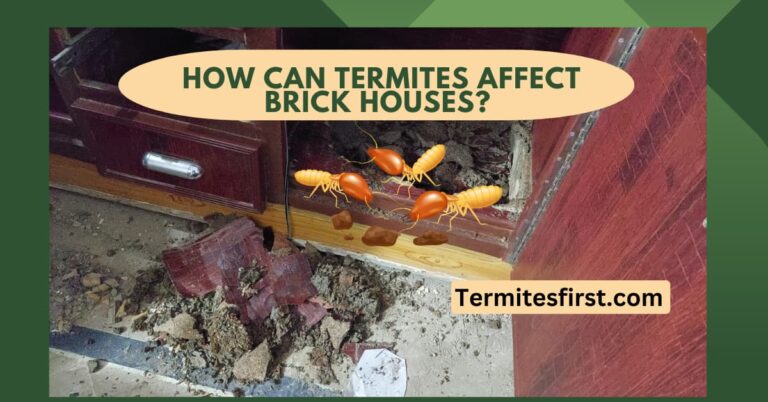

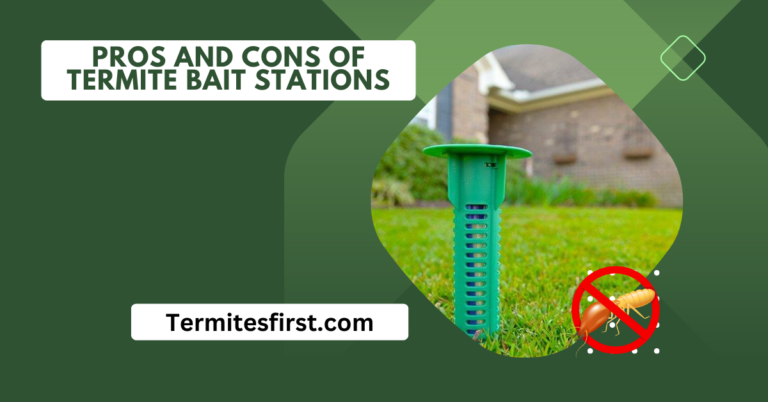
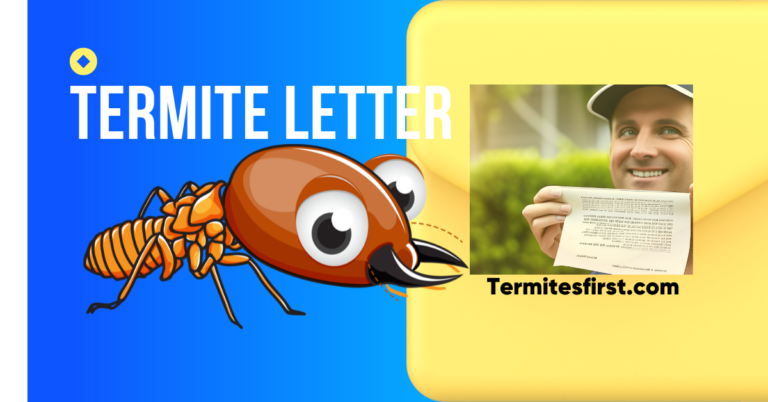
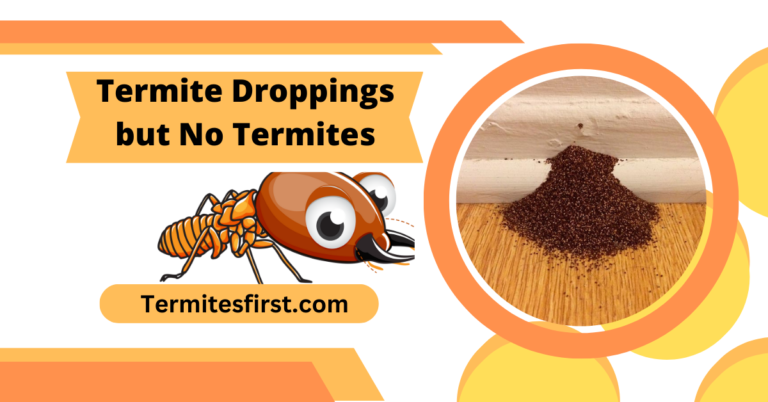
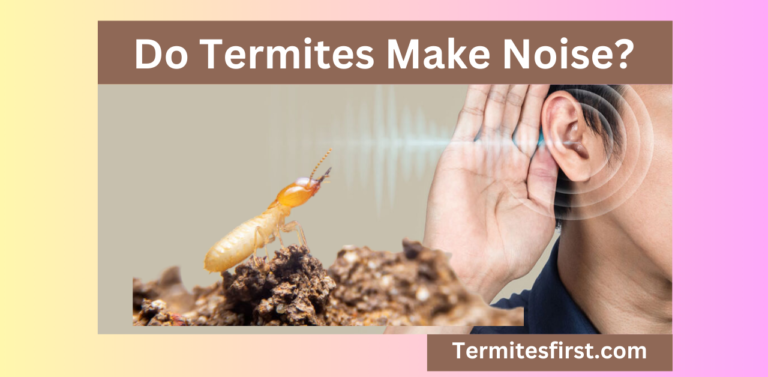
2 Comments